Nashville was at the height of the Civil Rights movement during the 1960s. Hundreds of Nashville student activists launched a sit-in campaign on February 13, 1960, to desegregate the city’s lunch counters. Similar sit-in protests and boycotts were held in Nashville by students from Fisk, the American Baptist Theological Seminary, and Tennessee A&I, following students in Greensboro, North Carolina. Since Jim Crow laws still governed Tennessee in the early 1960s, public facilities such as cafeterias, dressing rooms in department stores, hotels, and restaurants were segregated based on race. Civil rights leader and lawmaker John Lewis and activist Diane Nash organized sit-ins at segregated lunch counters across the city. During the Nashville sit-ins, some of which took place at the renamed Woolworth on 5th, a downtown Nashville restaurant, the song “We Shall Overcome” was first used as an anthem of the civil rights movement.
In 1963, Nashville and Davidson County merged to combat urban sprawl. The combined entity is officially known as “the Metropolitan Government of Nashville and Davidson County.” The Metro government was split into two service districts in 1963. A general service district and an urban services district.
In the 1960s, Nashville also became the capital of country music. The Country Music Hall of Fame and Museum was established in 1961. Jazz and blues musicians began to flock to Jefferson Street and remained there until Interstate 40 split the area. Nashville became the second-largest music production center after New York City in the mid-1960s.
The following photos will take you back to the 1960s in Nashville. Don’t forget to see what Nashville looked like in the 1940s and 1950s.
#1 Nashville Municipal Airport, Berry Field, Nashville, Tennessee, 1960
#2 Defense attorneys for student demonstrators, Nashville, Tennessee, 1960

Attorney Robert E. Lillard gestures in his defense of the students on trial for their part in the sit-in demonstrations in downtown stores and lunch counters. Pictured left to right (front row): Adolpho A. Birch, Robert E. Lillard, Coyness L. Ennix, Sr., and Avon Williams, Jr. Along with attorney Z. Alexander Looby, these attorneys were the spearheads of the defense for the student demonstrators.
#3 Belle Meade Mansion, 1964
#4 Grand Ole Opry cast on the stage of the Ryman Auditorium,1960s
#5 Percy Warner Park in Nashville, Tennessee after a snowfall, 1960
#6 Nashville Municipal Airport, Berry Field, Nashville, Tennessee, 1960
#7 Second Avenue and Broadway Intersection, 1964

View of the Northeast corner of Second Avenue and Broadway, showing the Silver Dollar Saloon building with the Phillips & Quarles Hardware Store in the Watkins Block building in the background. The Phillips & Quarles building has a man holding a paintbrush and can painted on the building's side. A parking lot is located behind the Silver Dollar Saloon. Signs on the Silver Dollar Saloon advertises the beverages they serve. The intersection has a traffic light and a traffic sign.
#8 The Arcade, between Third and Fourth Avenues, Nashville, Tennessee, 1967
#9 Nashville Municipal Auditorium, Nashville, Tennessee, 1967
#10 Public Square, Davidson County Courthouse in Nashville, Tenn. Tennessee State Capitol in the background, 1967
#11 The main entrance to Percy Warner Park, Nashville, Tennessee, 1967
#12 Memorial Square at Nashville, Tennessee as seen from the State Capitol grounds, 1967
#13 Lyndon B. Johnson arriving at the Hermitage, 1967
#14 Nashville Municipal Airport – Berry Field, 1967
#15 James Robertson Parkway in Nashville, Tennessee, 1967
#16 Aerial view of downtown Nashville, Tennessee, looking south, 1969.
#17 Nashville, Tennessee as seen from interstate highway overpass, 1969
#18 The Municipal Auditorium in Nashville, Tennessee, 1960s
#19 Belle Meade Mansion lawn and drive, 1960s
#20 N. Hirsch & Co. and Trade Palace, 1960s

Exterior view of N. Hirsch & Co. and Trade Palace on Market Street, with people standing in front of the building and in the windows. Signs on the building advertise dry goods, clothing, boots, shoes, hats, carpets, and oilcloths.
The building has the words "wholesale and retail dry goods & clothing" painted on the brick. The merchandise on the sidewalk includes trunks, shoes, and suits. The two-story brick buildings for the businesses have crow-stepped gables. N. Hirsch & Co.'s second-floor windows have rectangular lintels, while the Trade Palace windows have decorative lintels.
#21 Fire engine riders, 1961

This photograph by Nashville Banner photographer Bill Goodman is hand-titled "Fire engine riders" and depicts a scene in front of the Fannie Battle Day Home located at 911 Shelby Avenue in East Nashville.
The horse-drawn fire wagon has a driver and a young boy seated on his left, with a young man behind the wagon as they progress in front of the children and staff of the Day Home. The groundbreaking ceremony for the new facility was held on November 12, 1958. The one-story structure was designed by the Rodgers and Rodgers architectural firm.
#22 A view from the water fountain at the Davidson County Courthouse, Nashville, 1968
#23 Advertisement at the Tennessee State Fair, Nashville, Tennessee, 1969

The companies listed are: WENO Radio 1430; Cozy Living Mobile Homes, and McCord Crane Service. The fairgrounds, located approx. one mile south of downtown Nashville, opened in 1891 as Cumberland Park.
The Park was built as a harness racing track with a grandstand that seated 7,000 people. In 1904 the harness racing track hosted its first automobile race. In 1906 the first Tennessee State Fair was held. Over the years, the fairgrounds have been hosting to nighttime airplane rides, a swimming pool, an amusement park, and stock car races, among other things. In 1965 a fire at the fairgrounds destroyed several buildings, the grandstands and numerous restaurants.
Today the fairgrounds are used for various conferences, expos, and trade shows, along with the annual Tennessee State Fair.
#24 Avon N. Williams, Jr., and Marie Bontemps celebrate after Tennessee state Senate race, 1968

A photograph of Avon N. Williams, Jr., being congratulated by his wife, Marie Bontemps, and supporters after his successful bid to become the first African American senator in Tennessee since Reconstruction. He ran for state senator from the 19th District in Nashville. Born in Knoxville, Tenn., Avon N. Williams, Jr., was one of the leading African American lawyers in Tennessee. After practicing law in Knoxville, he became law partners with prominent Nashville attorney, Z. Alexander Looby. His role as attorney for the NAACP Legal Defense Fund sparked a long history of involvement with the civil rights movement. His role with Geier v. Blanton helped to bring about merger of University of Tennessee and Tennessee State University. The former Nashville campus of UT Nashville was later named the Avon Williams Jr. Campus of Tennessee State University. He also cosponsored the law requiring public schools to teach African American history. He was a member of Tennessee state senate from 1968 -1990.
#25 Children fishing at Shelby Park, Nashville, Tennessee, 1966
#26 Nashville Municipal Auditorium construction site with a view of Capitol Park Inn, 1961
#27 Deaderick Street at Third Avenue North, 1960
#28 Exterior of the Ryman Auditorium and Opry Gift Shop, 1967

Exterior of the Ryman Auditorium. Signs for WSM Grand Ole Opry, Grand Ole Opry House, and National Life & Accident Insurance Company can be seen on the building's exterior.; On an adjacent building are signs for Allright Auto Park, Opry Park, and the Opry Souvenir and Gift Shop.
#29 Grand Ole Opry cast onstage at the Ryman Auditorium, 1969
#30 Buses carrying White House Press Corps, 1967
#31 A view of the water fountain at the Davidson County Courthouse, Nashville, Tennessee, 1968
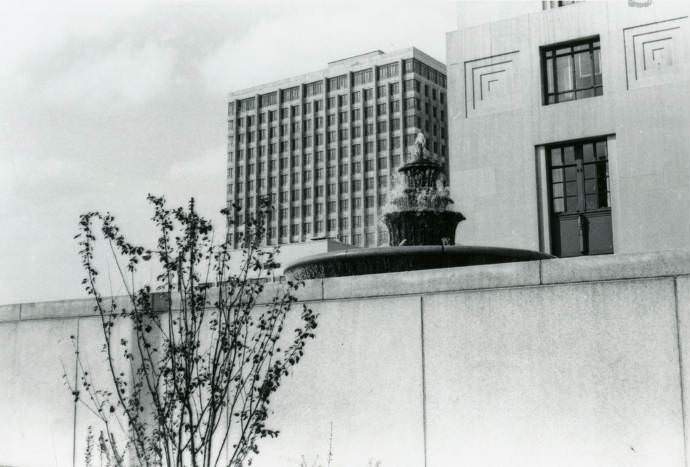
The Davidson County Courthouse, also known as Metropolitan Courthouse, is an Art Deco building built in 1936. It was listed on the National Register of Historic Places in 1987. It was designed by Nashville architect Emmons H. Woolwine and the firm of Dennison and Hirons of New York.
#32 Aerial of Crieve Hall and Nolensville Road area, south of Nashville, Tennessee, 1961
#33 Aerial view of Tennessee State Capitol in downtown Nashville, 1961
#34 Allied Catering Service, 1961

They are cited in the 1965 City Directory, with Bob W. Armstrong, and James P. Gracy), located at 1038 W. Kirkland Avenue. The directory refers to a service for “office parties, sales meetings, company picnics and buffets.” Some of the trucks advertise they are a coffee-break service providing coffee, donuts and sandwiches.
#35 Amusement ride at the Tennessee State Fair, Nashville, Tennessee, 1969

The fairgrounds, located approx. one mile south of downtown Nashville, opened in 1891 as Cumberland Park. The park was built as a harness racing track with a grandstand that seated 7,000 people. In 1904 the harness racing track hosted its first automobile race. In 1906 the first Tennessee State Fair was held. Over the years, the fairgrounds have been host to nighttime airplane rides, a swimming pool, an amusement park, and stock car races, among other things. In 1965 a fire at the fairgrounds destroyed several buildings, the grandstands and numerous restaurants. Today the fairgrounds are used for various conferences, expos, and trade shows, along with the annual Tennessee State Fair.
#36 American Airlines Astrojet flight, 1961

The signage reads “Nashville’s Gateway to the Jet Age, Athens of the South.” American and Eastern airlines were the first air carriers to serve Nashville. Nashville's airport officially opened in 1937 as Berry Field, in honor of Colonel Harry S. Berry, the state administrator of the Works Progress Administrator, or WPA. Berry Field became the military base for the 4th Ferrying Command during World War II and was returned to the city when the war ended. The airport’s name was officially changed to Nashville International Airport in 1988, but the original three-letters BNA, which stands for Berry Field Nashville, remains.
#37 Amusement ride at the Tennessee State Fair, Nashville, Tennessee, 1969

The fairgrounds, located approx. one mile south of downtown Nashville, opened in 1891 as Cumberland Park. The park was built as a harness racing track with a grandstand that seated 7,000 people. In 1904 the harness racing track hosted its first automobile race. In 1906 the first Tennessee State Fair was held. Over the years, the fairgrounds have been host to nighttime airplane rides, a swimming pool, an amusement park, and stock car races, among other things. In 1965 a fire at the fairgrounds destroyed several buildings, the grandstands and numerous restaurants. Today the fairgrounds are used for various conferences, expos, and trade shows, along with the annual Tennessee State Fair.
#38 Arcade Building wins the City Beautiful Award, Nashville, Tennessee, 1962

This beautiful covered shopping arcade, located between Fourth and Fifth Avenues N, in downtown Nashville, was built in 1903 and was modeled after the Galleria Vittorio Emmanuele II arcade in Milan, Italy. The City Beautiful Award ribbon was awarded on April 3rd, 1962 by the City Beautiful Commission of Nashville. Several of the businesses pictured in the photos include Barrick Jewelers, Jacobs Jewelers, Hollywood Photos, Cato’s Malt Shop, Myers Camera Shop, the Post Office, Karl’s Famous Name Shoes, Arcade Hose, White’s Greeting Cards, Childs Toggery, and Strobel’s Music Shop. Includes a photo of Mrs. Ellen Stokes Wemyss with others at the Arcade, and another group at the Curtis Casualty Insurance Office.
#39 Bailey’s Food Market tree planting with Mayor West and traffic patrol mothers, Nashville, Tennessee, 1962

Mayor Ben West is present for the event, as well as many traffic “patrol mothers” and two traffic police officials. The 1963 City Directory cites the name Neblo O Bailey associated with this store. The sign advertisements include Coca-Cola, Velvet Ice Cream, and Abbott “bonded termite & pest control.”
#40 Baptist Book Store on Broadway, Nashville, Tennessee, 1968
#41 Bordeaux Garden Park, Nashville, Tennessee, 1966

A landscape and construction view of Bordeaux Garden Park, at Snell Road near County Hospital in Davidson County, Tennessee. At the request of the people of Bordeaux represented by Councilmen Arch Carney and James Bates, the County Hospital leased the land to the Park Board in 1964. Funding from a 1964 bond issue was used to construct a playground and ball diamond in the park.
#42 Bordeaux Garden Park, Nashville, Tennessee, 1966

A landscape and construction view of Bordeaux Garden Park, at Snell Road near County Hospital in Davidson County, Tennessee.
At the request of the people of Bordeaux represented by Councilmen Arch Carney and James Bates, the County Hospital leased the land to the Park Board in 1964. Funding from a 1964 bond issue was used to construct a playground and ball diamond in the park.
#43 Briggs Bros. Paint Company, Nashville, Tennessee, 1969
#44 Broadway Post Office, Nashville, Tennessee, 1968

The historical post office was constructed from 1933 to 1934 under the direction of the local architectural firm of Marr & Holman, the building was financed by monies appropriated by Congress during the Hoover administration. Following guidelines from the Office of the Supervising Architect for such public buildings, Nashville’s post office displays both of the most distinctive architectural styles of the period: classicism and Art Deco. The building was listed on the National Register of Historic Sites in 1984. It served as the main U.S. Post Office for Nashville until 1986, when a new central processing facility opened in Donelson. It continued to serve as a downtown branch of the post office after that time. The building was transferred to the city of Nashville in 1998 in preparation for its use as the home to the Frist Center for the Visual Arts.
#45 Capitol Airways flight to California, 1960s
#46 Centennial Park croquet court, Nashville, Tennessee, 1961
#47 Centennial Park croquet court, Nashville, 1961
#48 City Office Building on Second Avenue South, Nashville, Tennessee, 1965
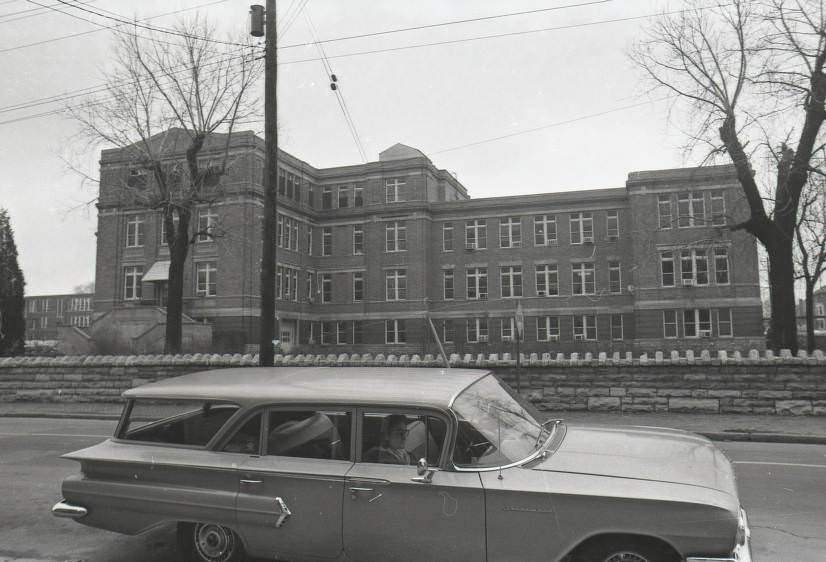
This structure, located at 800 2nd Avenue S, was renovated by Metro government as an office building. The original project was to establish a teaching hospital to be called Galloway Memorial Hospital, a joint venture between Vanderbilt and the Methodist Episcopal Church. The new hospital construction began at Vanderbilt’s south campus starting in 1916, at the southwest corner of the old University of Nashville in the “College Hill” area. However, this structure was only partially completed, as work on the new Vanderbilt hospital complex was instead established on the West End campus. The partially completed Galloway Hospital building in south Nashville stood vacant until purchased by the City for office space in the 1930s
#49 City Office Building on Second Avenue South, Nashville, Tennessee, 1965
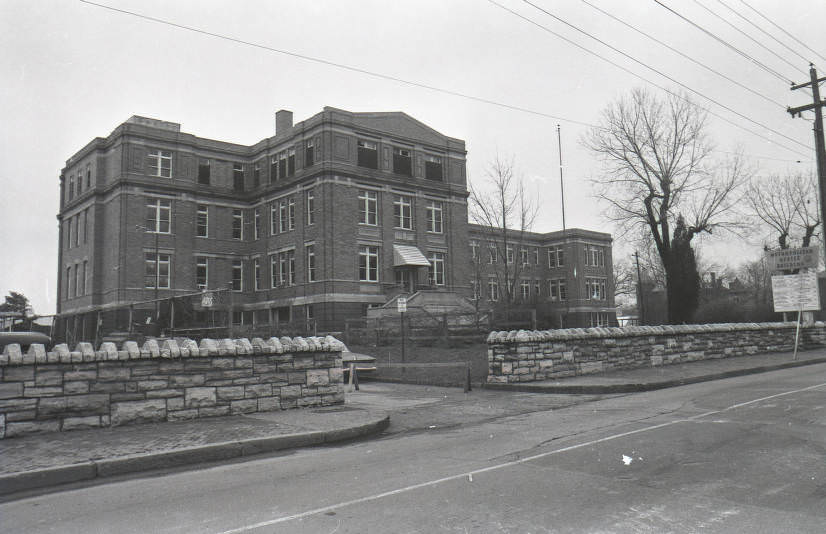
The construction was finished and the structure was utilized as a local government office building. The area immediately around the campus became zoned for light industrial use or became a part of I-265 through South Nashville.
During the 1980s some of the neighborhood became converted back to residential use. The hill is known as “Rutledge Hill” or “Rolling Mill Hill.”
#50 Coggin Chevrolet, Nashville, Tennessee, 1960
#51 Continental Imperial House Apartments, Nashville, Tennessee, 1962
#52 Country Music Hall of Fame and Museum, 1967

This original facility would include educational programs, the CMF Press and CMF Records, the Country Music Foundation Library (1968), and the historic sites RCA Studio B (1977) and Hatch Show Print (1986).
The Music Row location was closed December 31, 2000. The building was later razed and a private parking lot for employees of music licensing firm BMI occupied the site. The entity moved to a new location at 222 Fifth Avenue S, in downtown Nashville.
#53 Davidson County Courthouse, Nashville, Tennessee, 1968

The Sam Lapidus Clothing Company and the Southern Coat & Dress Company are pictured in the background on the east side of the Public Square.
The Davidson County Courthouse, also known as Metropolitan Courthouse, is an Art Deco building built in 1936. It was listed on the National Register of Historic Places in 1987. It was designed by Nashville architect Emmons H. Woolwine and the firm of Dennison and Hirons of New York.
#54 East Side of the Tennessee State Capitol Building, 1961

The Andrew Jackson equestrian statue and east side of the Capitol Building are in view. The State Capitol was constructed between 1845 and 1859. It was designed in Greek Revival style by architect William Strickland (1788-1854). Strickland died before construction was completed and was interred in the walls of the north portico. His son, Francis W. Strickland, oversaw the completion of the project. The cupola was reputedly modeled on a Greek monument to Lysicrates and designed to be illuminated at night like a lantern.
The building was constructed of Tennessee Limestone and underwent major restoration from 1956-1960. During the restoration, much of the limestone, including most in the cupola and the Ionic columns and capitals, was replaced with Indiana limestone. The grounds contain monuments to famous people and events in Tennessee history. The Capitol was placed on the National Register of Historic Places in 1970.
#55 Easter egg hunt at West Park, Nashville, Tennessee, 1962

Many youngsters participated in this event and there were many eggs hidden for the children to eagerly find, along with refreshments and Easter baskets at the recreation building. The Mayor of the City of Nashville, Mayor Ben West, is pictured at the event, along with several parents, teachers, and City of Nashville Police Officers on hand for the event. The 1963 City Directory cites the address of West Park at 6001 Morrow Road, with a nearby Recreation Building.
#56 Easter egg hunt at West Park, Nashville, Tennessee, 1962
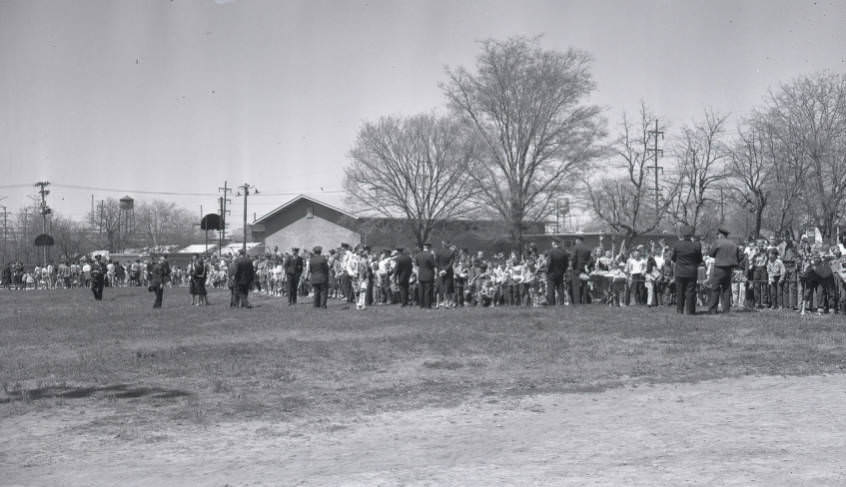
Many youngsters participated in this event and there were many eggs hidden for the children to eagerly find, along with refreshments and Easter baskets at the recreation building. The Mayor of the City of Nashville, Mayor Ben West, is pictured at the event, along with several parents, teachers, and City of Nashville Police Officers on hand for the event. The 1963 City Directory cites the address of West Park at 6001 Morrow Road, with a nearby Recreation Building.
#57 Easter egg hunt at West Park, Nashville, Tennessee, 1962
#58 Exterior of Sevier Park Community Center, Nashville, Tennessee, 1963

Sevier Park was purchased by the Park Board in 1945 from the estate of Colonel Granville Sevier, a retired Army officer and descendent of a brother to the first Governor of Tennessee. Sunnyside Mansion in the park was the home before the Civil War of Mrs. Jesse Benton, whose husband was the brother of Thomas H. Benton. The Park was dedicated by Mayor Thomas Cummings on June 7, 1948.
#59 Exterior of Sevier Park Community Center, Nashville, Tennessee, 1963
#60 Fire engine riders, 1960s

A scene in front of the Fannie Battle Day Home located at 911 Shelby Avenue in East Nashville. The horse-drawn fire wagon has a driver and a young boy seated on his left, with a young man behind the wagon as they progress in front of the children and staff of the Day Home. The groundbreaking ceremony for the new facility was held on November 12, 1958. The one-story structure was designed by the Rodgers and Rodgers architectural firm.
#61 Fourth Avenue North, downtown Nashville, 1960s
#62 Fourth Avenue North, downtown Nashville, circa 1960s
#63 Genesco Industrial Park ribbon cutting in Nashville, Tennessee, 1962
#64 Genesco Industrial Park ribbon cutting in Nashville, Tennessee, 1962
#65 Genesco Industrial Park ribbon cutting with Maxey Jarman, 1962
#66 Goodyear Blimp at the Nashville Airport, 1961
#67 Hook and ladder at Fire Department training center, Nashville, Tennessee, 1969

Historically, it was circa May of 1807, when the city formed its’ first volunteer fire fighting unit. The Nashville Fire Department was organized as a paid department on July 24, 1860, with John S. Dashiell as its first chief. The first horse drawn steam fire engine was called the "Hamilton," named after Mr. J. M. Hamilton, who was a prominent hardware man of the time. Two other horse drawn engines, the "Eclipse", and the "Deluge" were also in service. In 1861, a hook and ladder company were added to Nashville's growing fire department. Nashville put its’ first motorized fire engine in service in 1912.
#68 Inauguration of Mayor Beverly Briley, 1963

Briley served as the first mayor of the Metropolitan Government of Nashville and Davidson County. His inauguration took place on the same day that the consolidation of the city and county governments took effect. In this photo, Briley (right) is being sworn into office by Pride Tomlinson, Justice of the Supreme Court of Tennessee. Mayor Briley served from 1963-75, he was born in Nashville in 1914.
#69 Iroquois Steeplechase at Percy Warner Park, Nashville, Tennessee, 1962

One of the oldest steeplechases in the country, the Iroquois Steeplechase race was inaugurated in 1941, and has been held annually, except in 1945, due to World War II. Named for Iroquois, the first American-bred Thoroughbred to win the prestigious British Epsom Derby. The race is three miles long, and includes a signature parade of foxhounds.
#70 Jack Brandon Insurance Agency, Nashville, Tennessee, 1964
#71 Judge Cornelius’ Court, 1969

A 1947 graduate of Cumberland Law School, he began his career working as an insurance agency attorney. In 1953 he was elected to the 78th General Assembly, and served a two-year term as a member of the Tennessee House of Representatives. In 1958, Cornelius was elected Davidson County General Sessions Judge, and served in this capacity until 1968, when he became the first to preside over the Division III Criminal Court. He was appointed to the Court of Criminal Appeals in 1978, where he served until his retirement in 1986.
#72 Maxwell House Hotel being razed, Nashville, Tennessee, 1962

The hotel, which stood at the northeast corner of Fourth Avenue, North, and Church Street in downtown Nashville, was a prominent hotel at which several US Presidents and other dignitaries stayed, as well as being for years the center of Nashville’s social and political life. It was built by Colonel John Overton Jr. and named for his wife, Harriet Maxwell Overton. The architect was Isaiah Rogers. The Maxwell House Hotel was destroyed by fire on Christmas night 1961.
#73 Maxwell House Hotel being razed, Nashville, Tennessee, 1962
#74 Maxwell House Hotel, Tennessee, 1962
#75 Mayor Ben West at the Nashville Children’s Theater, 1961

The Nashville Children’s Theatre was formed by the Junior League of Nashville as an amateur theatre in 1931. At that time, the Junior League was fulfilling a commitment to establish children’s theatre in many U.S. cities. For years, NCT performed in numerous local landmarks, including Belcourt Theatre, and at Vanderbilt and Belmont Universities. In the late 1950s, Ann Stahlman Hill undertook the monumental task of creating a permanent home for NCT, with many other civic-minded individuals, and with her leadership they petitioned legislatures and engaged in fundraising. Nashville Children’s Theatre opened in 1960 at a facility next to the Howard School building and Lindsley Hall.
#76 Mayor Ben West speaking at Fort Nashborough, 1962

The structure that exists today is not the original settlement, but rather a reconstruction. The historic marker reads: “The original stockade fronted on the river slightly north of here, covering an area of about two acres. In that enclosure, on May 13, 1780, representatives of this and other settlements met and adopted the Cumberland Compact for the government of the new settlement. About 500 yards west, April 2, 1781, settlers, assisted by dogs, drove off the Indians in the Battle of the Bluffs.”
#77 Mayor Ben West speaking at Fort Nashborough, 1962

Fort Nashborough was the stockade established in early 1779 in the French Lick area of the Cumberland River valley as a forerunner to the settlement that would become the city of Nashville, Tennessee. The structure that exists today is not the original settlement, but rather a reconstruction. The historic marker reads: “The original stockade fronted on the river slightly north of here, covering an area of about two acres. In that enclosure, on May 13, 1780, representatives of this and other settlements met and adopted the Cumberland Compact for the government of the new settlement. About 500 yards west, April 2, 1781, settlers, assisted by dogs, drove off the Indians in the Battle of the Bluffs.” Mayor West (Raphael Ben West), born in Columbia, Tennessee, was Nashville’s 62nd Mayor of Nashville in office from 1951 to 1963.
#78 Mayor Briley and dignitaries at the groundbreaking ceremony of the Acuff-Rose Music Publishing building, Nashville, 1966

Acuff was an American country music singer, fiddler, and promoter. He joined the Grand Ole Opry in 1938 and was a leading figure for nearly four decades. Acuff co-founded the first major Nashville-based country music publishing company with Fred Rose: Acuff-Rose Music, which signed such acts as Hank Williams, Roy Orbison, and The Everly Brothers. In 1962, Acuff became the first living inductee into the Country Music Hall of Fame. The 1969 Nashville Suburban Directory cites the address at 2510 Franklin Road.
#79 Nashville Airport new terminal interior, 1961
#80 Nashville Airport new terminal interior, 1961
#81 Nashville Airport new terminal interior, 1961
#82 Nashville Bridge Company aerial view, 1960

A photograph of an aerial view of the Nashville Bridge Company with the Shelby Street Bridge and downtown Nashville, Tennessee, in the background. The company was started in 1902 by Arthur J. Dyer, who graduated from Vanderbilt with a degree in engineering in 1891. The company fabricated steel for several Nashville landmarks in the early 1900s including the Arcade, Nashville Trust Building and the Hermitage Hotel. Over the world war years they built tankers, barges, towboats, steamers, and, during World War II, minesweepers. In the late 1940s they met the demand for bridge construction, and later barges, towboats, bridge overpasses, and, in 1960, fabricated steel for the NASA service tower of the Saturn missiles. Mr. Dyer sold the company in 1968.
#83 Nashville Business – Coggin Chevrolet and National Casket Company, 1960s
#84 Nashville Business – Holiday Inn, 1960s
#85 One Hundred Oaks Shopping Center, 1960s
#86 Nashville Business – Patent Button Company and Courthouse Grill, 1960s
#87 Nashville Business – Spot Tavern and Cartwright’s Diner, 1960s
#88 Nashville Municipal Airport first plane at new terminal, T.W.A. Airlines, 1961

Improvements included a new terminal building with a modern control tower and Jet Age runways. Nashville's airport officially opened in 1937 as Berry Field, in honor of Colonel Harry S. Berry, the state administrator of the Works Progress Administrator, or WPA. Berry Field became the military base for the 4th Ferrying Command during World War II and was returned to the city when the war ended. The airport’s name was officially changed to Nashville International Airport in 1988, but the original three-letters BNA, which stands for Berry Field Nashville, remains.
#89 Nashville Municipal Auditorium construction, 1961

The construction site, including an aerial view, of the Nashville Municipal Auditorium, circa February 18th, 1961. This facility, located on Fourth Avenue N in downtown Nashville, opened on October 7th, 1962 and was the first public assembly facility in the Mid-South with air-conditioning. In addition to being a music venue, it has hosted religious conferences and sporting events.
The aerial view shows the construction site from above, as well as two Greek Revival style buildings designed by William Strickland: St. Mary’s Catholic Church (Fifth Avenue N, right foreground) and the Tennessee State Capitol Building (bordered by Sixth Avenue and Charlotte)
#90 New golf club at Shelby Park, Nashville, Tennessee, 1960
#91 New golf club at Shelby Park, Nashville, Tennessee, 1960
#92 New golf club at Shelby Park, Nashville, Tennessee, 1960
#93 Norman Binkley Elementary School, Nashville, Tennessee, 1961
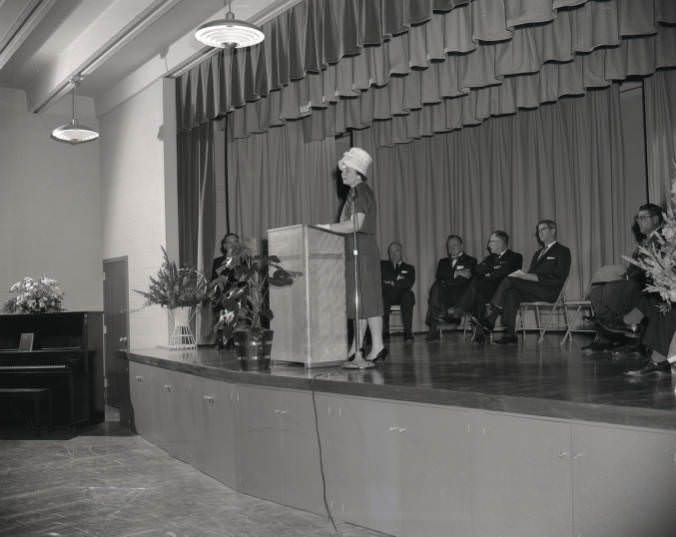
Participants, in addition to school children and community, included Mayor Ben West, Rev. R. L. Thomas, Miss Iva Simms, Principal, Dick Battle, E. B. Garrett, J. E. Moss, Owen Luallen, and Pamela Arnold.
The school, located at 4700 West Longdale Drive, opened in September, 1960, with nine classrooms serving approximately 300 children in grades 1-6. During construction the school was called Caldwell Hall and was built to serve part of the Crieve Hall, Elysian Meadows, Caldwell Hall and Elysian Park subdivisions.
The Davidson County Board of Education officially named the school in honor of Norman Binkley, a former state senator, who lived in the Woodbine area. Ten rooms were added in 1961 and six rooms in 1963 to accommodate a fast-growing community. School enrollment peaked near the 1,000 mark during the school year 1965-66.
#94 North Gulch area, Nashville, Tennessee, 1968
#95 Opening Day at Harpeth Hills Golf Course, Nashville, Tennessee, 1965
#96 Opening day at Harpeth Hills Golf Course, Nashville, Tennessee, 1965
#97 Opening Day at Harpeth Hills Golf Course, Nashville, Tennessee, 1965
#98 Billboard supporting Metropolitan Government, 1968
#99 Charles Trabue, Beverly Briley, and Ben West at the groundbreaking for a new main library in Nashville, 1963

Pictured are, from left to right, Chairman of the Nashville Public Library Board Charles Clay Trabue, Jr., Metro Mayor Beverly Briley, Mrs. Nellie Jackson Estes, and former Mayor Ben West. Mrs. Estes was present at the original groundbreaking of the Carnegie Library of Nashville in 1903, which the new facility replaced. Administered under the new Metropolitan Government, the library was dedicated on January 16, 1966; it was named the Ben West Library on June 5, 1977 in memory of Mayor Ben West. Designed by the architectural firm of Taylor & Crabtree, Inc., this downtown main library served the public from 1963 until 2001.
#100 Mass meeting, Fisk University, Nashville, Tennessee, with Guy Carawan leading song on guitar, 1960
#101 Sign protesting Metro Consolidation, 1962
#102 Students marching during the Freedom March on Jefferson Street, Nashville, Tennessee, 1963

Leading the march is John R. Lewis and Archie E. Allen. The Freedom March was sponsored by the Projects Committee of the Nashville Christian Leadership Council. According to Reverend Kelly Miller Smith, the "Freedom March was designed to emphasize that the current movement was a people's movement and not just a leader's cause." The marchers started at the campus of Tennessee State A & I, down 8th Avenue North, then into the downtown area.
The Freedom March was the largest planned organized protest in Nashville since the 1960s downtown sit-ins.
#103 Opening Day at Harpeth Hills Golf Course, Nashville, Tennessee, 1965
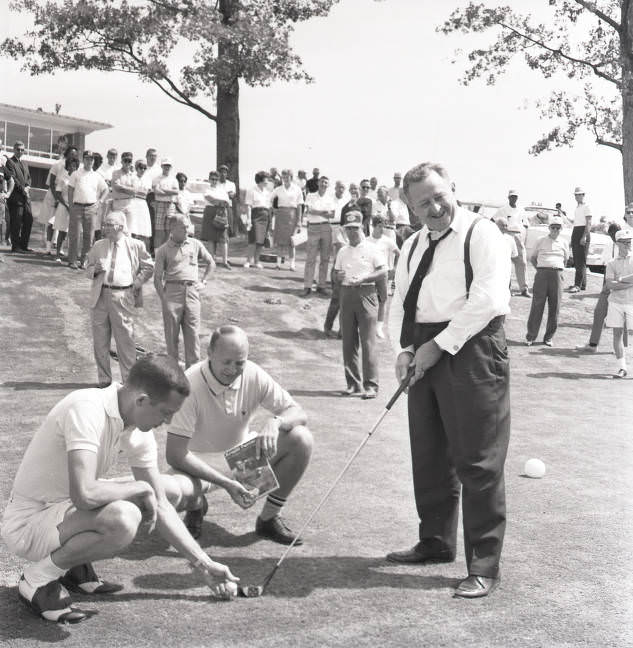
This photo relates to the 1965 official opening of Harpeth Hills Golf Course at Percy Warner Park. Harpeth Hills is widely respected as one of Tennessee’s top public golf facilities.
This public golf course is located at 2424 Old Hickory Blvd. in Forest Hills, Tennessee near the Belle Meade area, approximately 12 miles southwest of downtown Nashville.
#104 Patti Page at Capitol Park Inn, Nashville, Tennessee, 1962
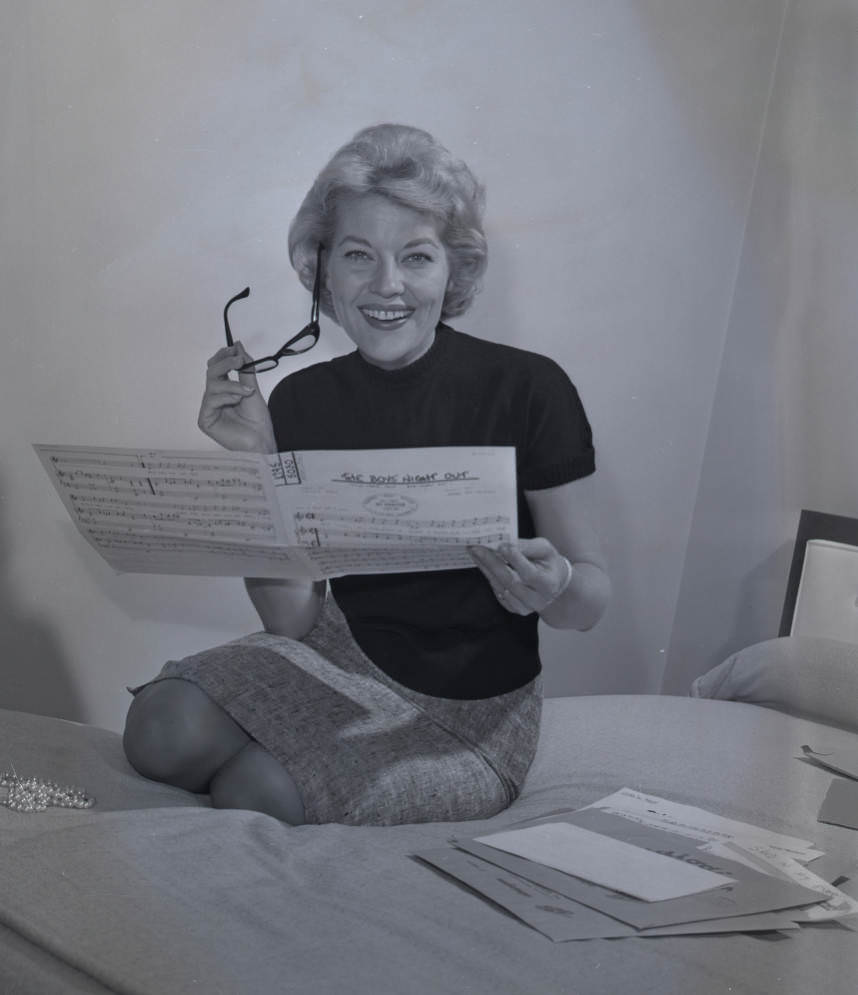
The song was performed by Patti Page in the 1962 MGM comedy movie “Boys’ Night Out.” Patti Page, born Clara Ann Fowler, was an American singer and one of the best-known female artists in traditional pop music and country.
The Capitol Park Inn was located in downtown Nashville at 400 5th Avenue N at Charlotte Avenue, 3.
#105 Parkway Towers, Nashville, Tennessee, 1968
#106 Charter Commission at work, 1962

Members of the commission appointed by Nashville Mayor Ben West were Carmack Cochran, R. N. Chenault, Alexander Looby, Rebecca Thomas, and Joe Torrence. Members of the commission appointed by Davidson County Judge Beverly Briley were Cecil Branstetter, Harlan Dodson, Edward Hicks, Victor Johnson, and Charlie Warfield.
#107 Massive crowd of silent marchers, Nashville, Tennessee, 1960

A crowd of over 3000 participants marched in silence from the campus of Tennessee A & I University to the office of Mayor Ben West at City Hall to protest the bombing of the home of civil rights attorney Z. Alexander Looby. Upon arriving at the Court House Square, students and leaders confronted Mayor Ben West about his viewpoints on lunch counter segregation.
This was the first major step in desegregating public accommodations in Nashville.
#108 Billboard supporting Metropolitan Government, 1968
#109 Charles Trabue, Beverly Briley, and Ben West at the groundbreaking for a new main library in Nashville, Tennessee, 1963

A photograph of the groundbreaking ceremonies for the main library in Nashville, Tennessee, located at 8th Avenue North and Union Street, circa December 1963. Pictured are, from left to right, Chairman of the Nashville Public Library Board Charles Clay Trabue, Jr., Metro Mayor Beverly Briley, Mrs. Nellie Jackson Estes, and former Mayor Ben West. Mrs. Estes was present at the original groundbreaking of the Carnegie Library of Nashville in 1903, which the new facility replaced. Administered under the new Metropolitan Government, the library was dedicated on January 16, 1966; it was named the Ben West Library on June 5, 1977 in memory of Mayor Ben West. Designed by the architectural firm of Taylor & Crabtree, Inc., this downtown main library served the public from 1963 until 2001.
#110 Mayor Beverly Briley and others removing city limit sign, 1962
#111 Students marching during the Freedom March on Jefferson Street, Nashville, Tennessee, 1963

Leading the march is John R. Lewis and Archie E. Allen. The Freedom March was sponsored by the Projects Committee of the Nashville Christian Leadership Council. According to Reverend Kelly Miller Smith, the "Freedom March was designed to emphasize that the current movement was a people's movement and not just a leader's cause." The marchers started at the campus of Tennessee State A & I, down 8th Avenue North, then into the downtown area.
#112 Photograph of the Nashville Public Library Airport Reading Room, 1962

The Airport Reading Room was established during the tenure of Chief Librarian David Marshall Stewart, with Mrs. Mary Clark as the branch librarian. The facility had been developed alongside the new 145,900 square-foot passenger terminal that opened in 1961, during Mayor Ben West's term. The reading room officially opened to the public in 1962, and was active until 1969.
#113 Young Moderns Den of the Nashville Public Library, 1960

The young adults are making use of the educational and entertainment resources, while one couple dances to the sounds of a phonograph. The Young Moderns Den was located in the basement of the library. The public library building was constructed with a $100,000 grant from philanthropist Andrew Carnegie, and the cornerstone was laid on April 27, 1903. Officially opened to the public on September 19, 1904, the building was located at 8th Avenue North and Union Street. The Carnegie Library of Nashville was renamed the Nashville Public Library in 1934, being active at this location until 1963, when the new Metropolitan Government began construction on a new main library upon the site.
#114 Photograph of U.S.S. Nashville (LPD-13), 1969

It is an Amphibious Transport Dock (LPD) of the Austin-class, designed to embark, transport, and land elements of a landing force by sea or air during expeditionary warfare missions. This photograph is believed to have been taken prior to the ship's commissioning on 14 February 1970. It is the fifth ship to bear the name Nashville.
#115 Program event at Nashville’s Jewish Community Center featuring Nashville Mayor Ben West, 1961

This photo relates to a special program hosted at Nashville’s Jewish Community Center featuring Nashville Mayor Ben West, circa February 1961. Mayor West presented a talk about his recent trip to visit Kfar Chabad, a Chabad-Lubavitch village located in central Israel. Mayor West traveled to the Chabad circa November 1960.
#116 Shelby Street Bridge River views, 1961
#117 East Side of Public Square, 1960
#118 Nashville Municipal Airport, 1961.
#119 Street Scene, Broad Street at Eighth Avenue, 1960
#120 West End Avenue, 1960
#121 Tennessee State Fairgrounds Fire, 1965
#122 Swimming class at Sevier Park pool, Nashville, 1965

Sevier Park, located in the 12th South neighborhood of Nashville, was purchased by the Park Board in 1945 from the estate of Colonel Granville Sevier, a retired Army officer and descendent of a brother to the first Governor of Tennessee. Sunnyside Mansion in the park was the home before the Civil War of Mrs. Jesse Benton, whose husband was the brother of Thomas H. Benton.
#123 Teachers from India visit with Mayor Briley, 1964
#124 Tennessee State Capitol Building, 1961

It was designed in Greek Revival style by architect William Strickland (1788-1854). Strickland died before construction was completed and was interred in the walls of the north portico. His son, Francis W. Strickland, oversaw the completion of the project. The cupola was reputedly modeled on a Greek monument to Lysicrates and designed to be illuminated at night like a lantern.
The building was constructed of Tennessee Limestone and underwent major restoration from 1956-1960. During the restoration, much of the limestone, including most in the cupola and the Ionic columns and capitals, was replaced with Indiana limestone.
#125 Tennessee State Capitol Building, 1961

A view of the Tennessee State Capitol, September 8th, 1961, in downtown Nashville. The State Capitol was constructed between 1845 and 1859. It was designed in Greek Revival style by architect William Strickland (1788-1854). Strickland died before construction was completed and was interred in the walls of the north portico. His son, Francis W. Strickland, oversaw the completion of the project.
The cupola was reputedly modeled on a Greek monument to Lysicrates and designed to be illuminated at night like a lantern.
The building was constructed of Tennessee Limestone and underwent major restoration from 1956-1960. During the restoration, much of the limestone, including most in the cupola and the Ionic columns and capitals, was replaced with Indiana limestone. The grounds contain monuments to famous people and events in Tennessee history, such as the Edward Ward Carmack statue in the foreground.
#126 Tennessee State Fair, 1961
#127 Tennessee State Fairgrounds Speedway, Nashville, Tennessee, 1961

The fairgrounds, located approx. one mile south of downtown Nashville, opened in 1891 as Cumberland Park. The Park was built as a harness racing track with a grandstand that seated 7,000 people. In 1904 the harness racing track hosted its first automobile race. In 1906 the first Tennessee State Fair was held. Over the years, the fairgrounds have been hosted to nighttime airplane rides, a swimming pool, an amusement park, and stock car races, among other things. In 1965 a fire at the fairgrounds destroyed several buildings, the grandstands and numerous restaurants. Today the fairgrounds are used for various conferences, expos, and trade shows, along with the annual Tennessee State Fair.
#128 Tennessee State Fairgrounds Speedway, Nashville, Tennessee, 1961

A view of a car race at the Fairgrounds Speedway on September 10th, 1961. The fairgrounds, located approx. one mile south of downtown Nashville, opened in 1891 as Cumberland Park. The park was built as a harness racing track with a grandstand that seated 7,000 people. In 1904 the harness racing track hosted its first automobile race
#129 The Firettes at Engine Company 8, Nashville, Tennessee, 1965

A group photo of the championship baton twirlers known as the “Firettes,” posing at Metro Nashville Fire Department Engine Company No. 8, circa July, 1965. The Firettes won the World Baton Twirling Championship of 1964. Baton twirling is a physically demanding and highly creative sport that combines dance and gymnastic routines set to music with batons twirling and flying through the air.
#130 The Hermitage home of Andrew Jackson, 1961

The Hermitage is a historical plantation and museum located in Davidson County, Tennessee, about 10 miles east of downtown Nashville. It was owned by Andrew Jackson, the seventh President of the United States, from 1804 until his death at the Hermitage in 1845. In 1889, the Hermitage was opened to the public as a museum, both of Jackson’s life and the antebellum South in general. The property was declared a National Historic Landmark in 1960.
#131 The Hermitage home of Andrew Jackson, 1961

The Hermitage is a historical plantation and museum located in Davidson County, Tennessee, about 10 miles east of downtown Nashville. It was owned by Andrew Jackson, the seventh President of the United States, from 1804 until his death at the Hermitage in 1845. In 1889, the Hermitage was opened to the public as a museum, both of Jackson’s life and the antebellum South in general. The property was declared a National Historic Landmark in 1960.
#132 The Hermitage home of Andrew Jackson, 1961 September 14

A view (September 14th, 1961) of the Hermitage, home of President Andrew Jackson. The Hermitage is a historical plantation and museum located in Davidson County, Tennessee, about 10 miles east of downtown Nashville. It was owned by Andrew Jackson, the seventh President of the United States, from 1804 until his death at the Hermitage in 1845. In 1889, the Hermitage was opened to the public as a museum, both of Jackson’s life and the antebellum South in general. The property was declared a National Historic Landmark in 1960.
#133 The Hermitage home of Andrew Jackson, 1961
#134 The Hippodrome, 1968

Advertised as "the South's largest, finest roller rink," this multi-purpose facility served as a roller skating rink, ball room, sports arena and entertainment center from circa 1914 until 1968. It was at the time the largest and most popular indoor arena and entertainment center in town, providing decades of fun and popularity. Tony Sudekum, founder of the Crescent Amusement Company, owned the Hippodrome for most of its history. There were big-band dances in the late 1940s that included such famous acts as Benny Goodman, Xavier Cugat, Harry James and Sonny Dunham. Earlier, during the Depression years, there were walk-a-thons. Circa 1934, the Nashville Tennessean newspaper sponsored the city's first Golden Gloves boxing tournament at the Hippodrome, a very popular event that continued for the next thirty years. During World War II, the Hippodrome served as a USO facility where many soldiers enjoyed the social events and refreshments.
#135 Tree planting event at City Office Building on Second Avenue South, Nashville, 1961
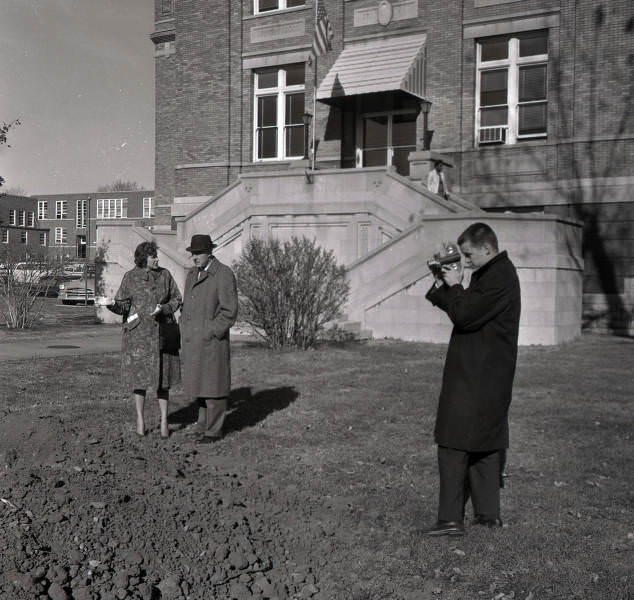
This structure, located at 800 2nd Avenue S, was renovated by Metro government as an office building. The original project was to establish a teaching hospital to be called Galloway Memorial Hospital, a joint venture between Vanderbilt and the Methodist Episcopal Church. The new hospital construction began at Vanderbilt’s south campus starting in 1916, at the southwest corner of the old University of Nashville in the “College Hill” area. However, this structure was only partially completed, as work on the new Vanderbilt hospital complex was instead established on the West End campus. The partially completed Galloway Hospital building in south Nashville stood vacant until purchased by the City for office space in the 1930s.
The construction was finished and the structure was utilized as a local government office building. The area immediately around the campus became zoned for light industrial use or became a part of I-265 through South Nashville. During the 1980s some of the neighborhood became converted back to residential use. The hill is known as “Rutledge Hill” or “Rolling Mill Hill.”
#136 Victory Memorial Bridge dedication, Nashville, Tennessee, 1964
#137 Victory Memorial Bridge, Nashville, Tennessee, 1964

This bridge connects the public square and the central business district, on the western side of the Cumberland River, to Main Street in East Nashville. M. S. Poteat’s firm was contracted to building the bridge approaches, as well as the bridge substructure. For the final phase, the superstructure and decking, the contract went to the Nashville Bridge Company. State engineer Roy Higgs was in charge of the project.
The Victory Memorial Bridge originated in part from a 1948 public movement to recognize Nashville and Davidson County military soldier casualties from World War II; officials later favored a joint memorial including Korean war names. Constructed of 1,900 feet of modern steel in stone, it officially opened May 19, 1956, with Mayor Ben West cutting the ribbon and reading a poem titled “The Bridge Builder” by local poet Miss Will Allen Dromgoole.
#138 W.T. Grant Department Store on Church Street, Nashville, Tennessee, 1968
#139 Woodland Street Bridge design drawing, Nashville, Tennessee, 1960s

This drawing was made by Mark Hartz Associates. The Woodland Street Bridge was the first Cumberland River bridge built under Metropolitan Government of Nashville and Davidson County. The new structure was dedicated on December 1st, 1966 with an address by Mayor Briley, who recalled the history of the original Woodland street bridge constructed in the 19th century that had served the horse and buggy traffic of Nashville and Davidson County. Fifth District Congressman Richard Fulton and Colonel Jesse Fishback, District Engineer of the Corps of Engineers, joined Mayor Briley in a ribbon cutting ceremony, along with Senator Albert Gore. Mr. John Bransford, President of the Nashville Area Chamber of Commerce, presided at the ceremony and spoke of the increase in business in the future with the opening of a new traffic artery into the city. Colonel Fishback remarked that the new bridge was an excellent example of the cooperation between federal and local governments in the planning and funding of a project.






















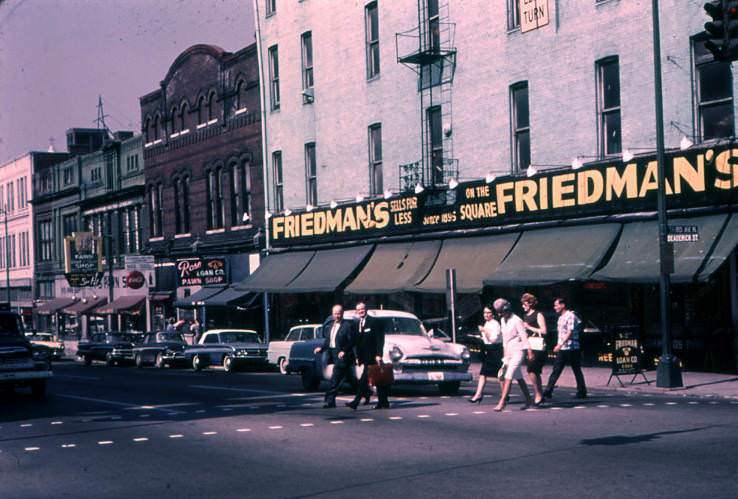

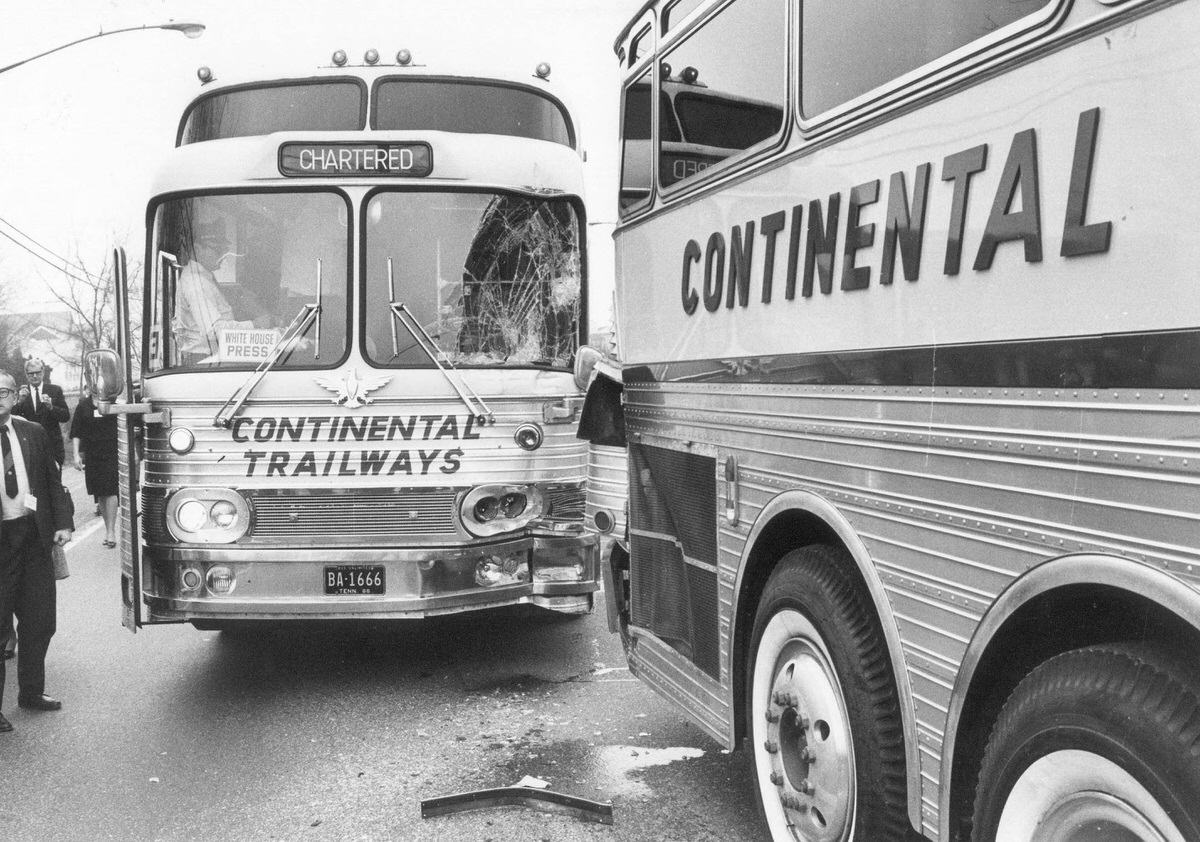























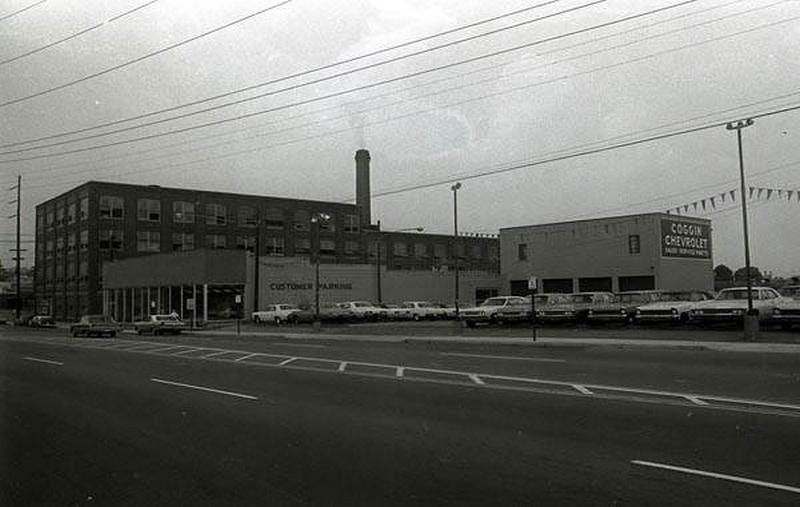

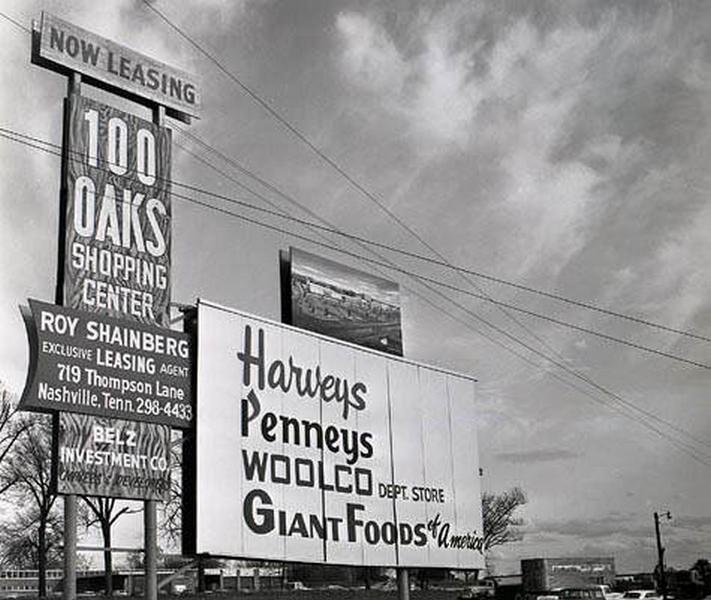
















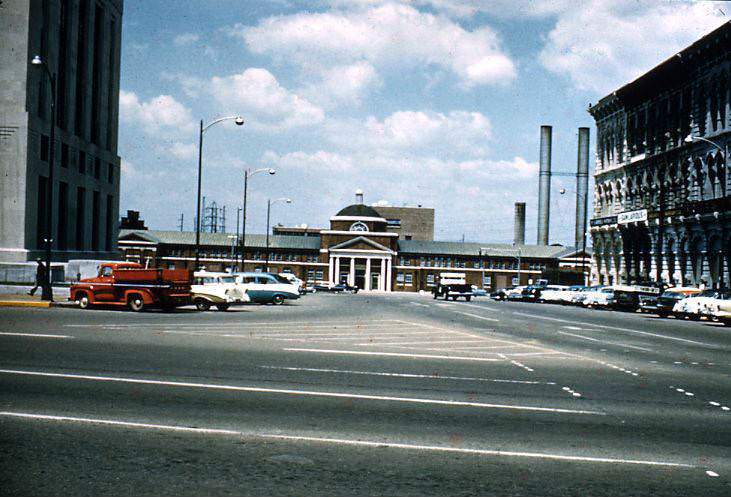












This is so cool! I’ve never even heard of the Arcade Building. Thanks for sharing!!
It’s more of an open air shopping center. If it’s even still there.
Anyone got any info on that Bordeaux garden park?